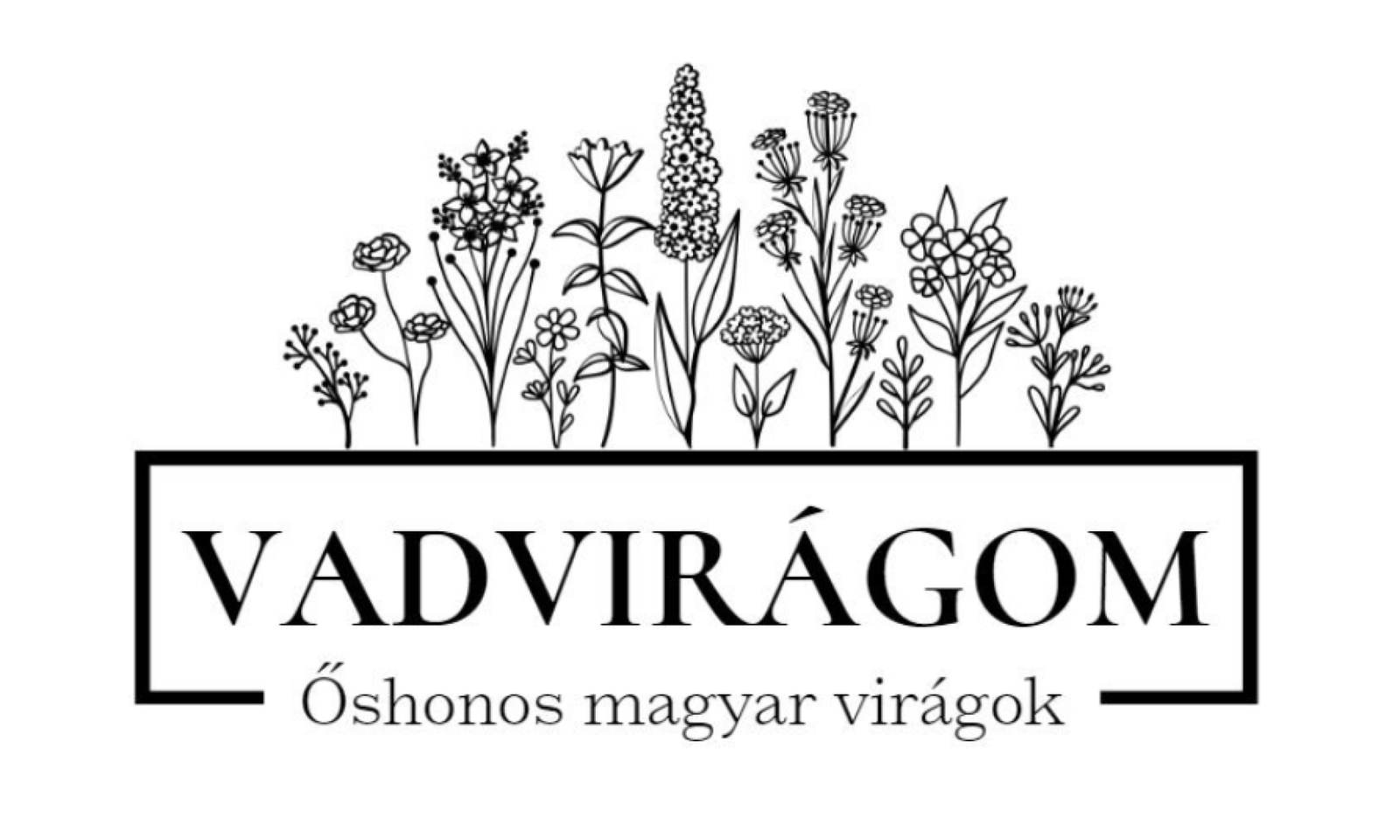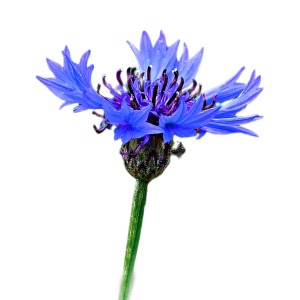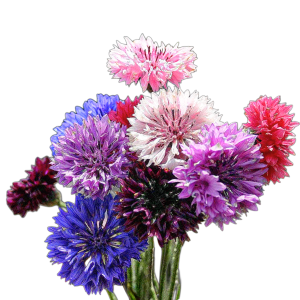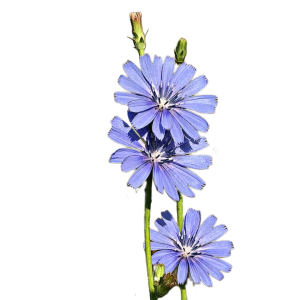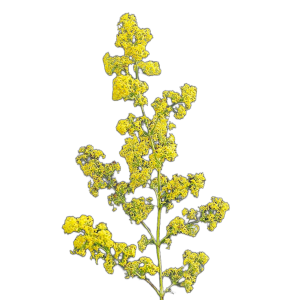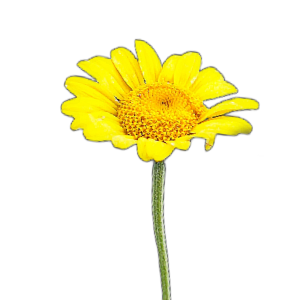-
-
Add to basket
- Add to wishlistAdd to wishlist
- also for window box, annual, bee-keeper, native
Cornflower (Centaurea cyanus "wild") 2g, ~420 seeds
- 875 Ft
- The cornflower (Centaurea cyanus) is one of our best known and most loved wild flowers, along with the poppy. Loved by pollinators, it flowers for a relatively long time in the garden. It is a medicinal herb, its flowers are edible, it used to be used to make dye, but it is also excellent for tea, which also gives it a beautiful colour. Early spring sowing with early flowering is an important time for pollinators, but it can also be sown in the autumn, in which case it will have bushier growth in spring/early summer. This...
Add to wishlistAdd to wishlist -
Add to basket
-
-
Add to basket
- Add to wishlistAdd to wishlist
- also for window box, annual, bee-keeper, native
Cornflower colour mix (Centaurea cyanus "Double Mix") 2g, ~440 seeds
- 875 Ft
- The cornflower (Centaurea cyanus) is one of our best known and most loved wild flowers, along with the poppy. Loved by pollinators, it flowers for a relatively long time in the garden. It is a medicinal herb, its flowers are edible, it used to be used to make dye, but it is also excellent for tea, which also gives it a beautiful colour. Early spring sowing with early flowering is an important time for pollinators, but it can also be sown in the autumn, in which case it will have bushier growth in spring/early summer. This...
Add to wishlistAdd to wishlist -
Add to basket
-
-
Add to basket
- Add to wishlistAdd to wishlist
- perennial, bee-keeper, native
Chickweed (Cichorium intybus) 1g, ~660 seeds
- 875 Ft
- A well-known wildflower is the field marigold (Cichorium intybus), which attracts pollinators with its pollen. Its flowering in autumn is an important time for pollinators. It was also used to make chicory coffee, but nowadays the cultivated variety is used for this purpose. Its pollen is white in colour. Properties: other names: thistle, wild chicory, endive, yucca, katanchory, coffee-cake, blue flower, sunflower, sunflower-flowering grass Latin name: Chicorium intybus family: Asteraceae life: perennial flowering time: July-October size:80-100 cm...
Add to wishlistAdd to wishlist -
Add to basket
-
- Out of StockRead more
- Add to wishlistAdd to wishlist
- 10/10 pollinator, annual, bee-feeder
Safflower (Carthamus tinctorius) 10 g, ~200 seeds
- 875 Ft
- Although it is not a native species, safflower (Carthamus tinctorius) can play a very important and useful role in small gardens for pollinators and birds. In summer, it is a favourite of pollinators, while in the winter months its seeds can be an important food source for many bird species (hence its inclusion in the Bird Lure Seed Mix). Historically, safflower has been cultivated for over 4000 years and has been used in many...
Add to wishlistAdd to wishlist -
-
- Out of StockRead more
- Add to wishlistAdd to wishlist
- 10/10 pollinator, perennial, butterfly favourite, bee-feeder, native
Milk thistle (Galium verum) 1g, ~3200 seeds
- 875 Ft
- The milkweed (Galium verum) is a native Hungarian wildflower that attracts many pollinators and is also a food plant for many butterfly species (including many of our protected butterflies, the sedge). It was used to make cheese, hence its name ('gala' means milk in Greek). It can also be used as a yellow dye, and in the past it was used not only to rennet milk but also to colour cheese, for example Gloucester cheese has a strong yellowish-orange colour...
Add to wishlistAdd to wishlist -
-
-
Add to basket
- Add to wishlistAdd to wishlist
- two-year
Black Mallow Rose (Alcea rosea "Nigra") 2g, ~100 seeds
- 875 Ft
- The Black Mallow Rose (Alcea rosea 'Nigra') has a long tradition in Hungarian gardens and its pollen is also very popular with pollinators. Historically, the varieties were introduced to Europe from south-west China in the 15th century and, according to my information, the black colour variation was created by Hungarian breeding. In the Middle Ages, various parts of the plant were used for medicinal purposes, such as anti-inflammatory and digestive treatment, and as a dyeing plant...
Add to wishlistAdd to wishlist -
Add to basket
-
-
Add to basket
- Add to wishlistAdd to wishlist
- perennial, biennial, bee-keeper, native
Painted chickweed (Anthemis tinctoria) 1g, ~2250 seeds
- 875 Ft
- The Painted Peppermint (Anthemis tinctoria) is a common wildflower, a biennial or short-lived perennial. In the old days its flowers were used to make yellow dye mixed with alum, hence the name. It would also make a lovely addition to rock gardens: it is particularly well suited because of its short stature and drought tolerance. Its leaves resemble those of chamomile, as does its close relative, the parlagi mint (the latter is easily confused with chamomile).
Add to wishlistAdd to wishlist -
Add to basket
-
-
Add to basket
- Add to wishlistAdd to wishlist
- perennial, may be sown in grass, herb, beekeeper, nitrogen bomb, native grassland, native
Rabbit's foot (Anthyllis vulneraria) 2g, ~660 seeds
- 875 Ft
- Rabbit's foot (Anthyllis vulneraria) is a well-known herb that has been used to treat wounds externally for its astringent properties. It is also a butterfly plant, so it fixes nitrogen from the air. It can also work when sown in grass: it can be a super component of pollinator-friendly lawns. Properties: other names: wonder clover, clover, cat's claw, rabbit's clover, wound clover, sapuka Latin name: Anthyllis vulneraria family: Fabaceae life: perennial flowering time: may-july size: 15-20 cm soil: average, dry...
Add to wishlistAdd to wishlist -
Add to basket
